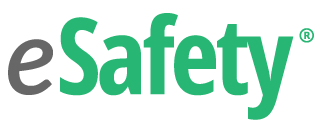Labeling is a key component of hazard communication. The labeling of hazardous chemical containers, such as drums, totes, vessels, tanks, and other containers, must be in place at all times during shipping and within your facility.
We are going to discuss two types of labeling. First are shipping labels, which must comply with the label requirements found in the GHS. These labels are provided by manufacturers, importers, and distributors of a chemical. Second are workplace or secondary containment labels, which may be found in the workplace.
The Hazard Communication Standard provides six elements that must be included on shipped containers. The pictograms, signal words, and hazard statements are the standardized elements of the label, which means that they may not deviate from the language or elements provided for each hazard class and category.
The pictograms, or symbols, relay health, physical, and environmental hazard information for a given hazard classification. The pictograms all consist of black symbols on a white background, surrounded by a red frame. There are eight pictograms associated with the hazard classes. As mentioned earlier, each hazard class has an associated pictogram.
The signal words that are provided are either “Danger” or “Warning.” Again, the signal words are prescribed for each hazard class and category. The final standardized elements of the label are the hazard statements; these standardized phrases describe the nature of the hazard.
The additional elements for the label include the precautionary statements, which provide supplemental information about prevention, response, storage, and disposal, aimed at minimizing or preventing adverse effects, and the product name or identifier, along with the supplier information.
Small containers, less than or equal to 100 milliliters, and very small containers, less than or equal to 3 milliliters, may be exempt from having all labeling elements on the container provided it is on the outer packaging along with a statement that the container must be stored within said packaging.
The second type of labeling is the secondary container labels at your facility. You will probably find secondary container labels on chemicals that have been transferred to a new container after arriving at your facility. The manufacturers, importers, and distributors may provide a pre-labeled secondary container for this purpose. If not, your facility may attach GHS compliant labels on your secondary containers or use another labeling system outlined in your written hazard communication program. These labels are not specifically required to comply with the six label elements that are provided in the GHS for shipping labels, but they must not contradict and need to include the product name and convey the general health and physical hazards.
Two common secondary container labeling systems, if GHS compliant labels are not used, are the National Fire Protection Association, or NFPA, system, which is the diamond-shaped figure; the second is the Hazardous Material Identification System, or HMIS, shown as a rectangle. Both of these labeling systems are very similar in how they depict the hazards of the chemicals within a container. Both systems use the same colors to indicate the four basic hazard parameters. Blue is the health hazard rating, red is the flammability hazard rating, yellow is the reactivity hazard rating, and white is a specific hazard warning under the NFPA, such as “do not mix with water,” which is depicted as a W with a line through it. Under the HMIS, this area is usually used to denote special precautions or specific personal protective equipment to be used with a chemical. The GHS hazard categories use a number and letter system where the number one and the letter A will always be the most severe hazard. The secondary container labeling systems, NFPA and HMIS, use a hazard rating scale of zero to four with zero being a minimal hazard and four being an extreme hazard which is the opposite of the GHS hazard categories’ numbering system. This is very important to remember.
For example, the GHS compliant label for acetone, which includes all of the required labeling elements, is easily identifiable with the flammable and exclamation point pictograms. In comparison, the NFPA label with its recognizable blue, red, yellow, and white diamonds, and the HMIS label, utilizes the same color scheme as the NFPA label except with stacked color bars instead of diamonds.
Remember, employee awareness is an important part of hazard communication. If shipped containers and workplace containers have different labeling systems, you must ensure that employees understand all the hazards associated with a chemical. If you use a workplace labeling system that differs from the GHS, additional training is necessary to ensure comprehension.
INTERESTED IN LEARNING MORE?
Get more information about the Hazard Communications course here.
